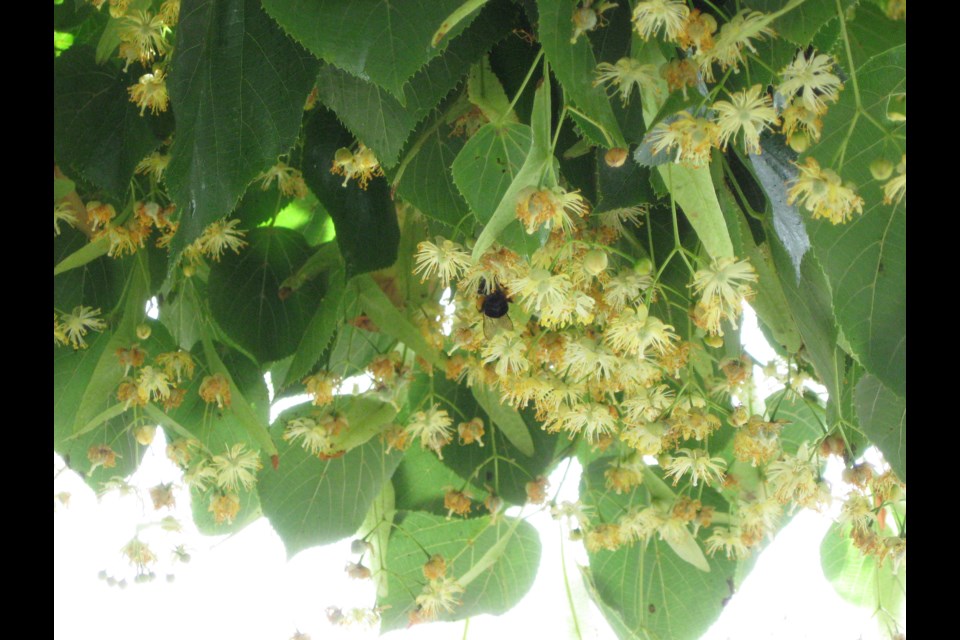It’s leaves I’m talking about, and my answer is – leave the leaves. They’re not only essential, they’re also beautiful. Look at them on the tree with the light coming from behind and you’ll see how complex their skeletal structure is. In summer, leaves absorb sunlight, water and carbon dioxide, converting them through photosynthesis into food for the tree. In winter, trees push their leaves off as a protective measure.
The lawn-cutting crew that tends the yard next door finishes up with the leaf blower. They point the machine at the fence between our backyards, blasting fallen leaves as well as soil into the air. Last time they also blasted the carpet of leaves I’d carefully strewn on my side of the fence. The sweet cicely seedlings growing beneath the leaves were ripped out. My frantic gestures were useless – the crew understood the opposite of what I intended and smiling, continued the assault with their leaf blower.
Luckily a friend who spoke both Chinese and English walked by and translated for me. I explained that leaves should be left on the ground because they protect what’s underneath and eventually decompose, making more soil. The lawn-cutting crew's response was that they’d been instructed to blow away everything that wasn’t firmly rooted to the ground.
The ground, however, is animate, alive – unlike a house, which is inanimate and has to be cleaned. The ground needs to eat. Imagine calling your family to supper and then whisking the food off their plates just as they sit down. That’s what you’re doing to the ground when you attack it with your leaf blower.
There’s a beech tree in my backyard, and during autumn its leaves drop on the lawn. I rake them on to the garden beds and spread them around the base of the beech, birch and linden – the sight reminds me of ladies sitting down with their skirts out full. Poking out now from under the brown leaves are clusters of snowdrops, crocuses and daffodils - masses of white, yellow and purple flowers that encircle the trees. Once these have bloomed, love-in-a-mist will take their place at the foot of the birch. The stems and leaves are coming up already, as are those of broad-leaf parsley, offspring of a gigantic parsley plant that grew unexpectedly last year alongside love-in-a-mist.
The process of nourishing the ground is helped along by creatures such as slugs and snails, who munch the decaying matter and turn it into humus. Fallen leaves also shelter various insects – tasty protein snacks for birds.
Nature knows what it’s doing. I try to be its friend and servant, never its adversary or master.
Sabine Eiche is a writer and art historian



